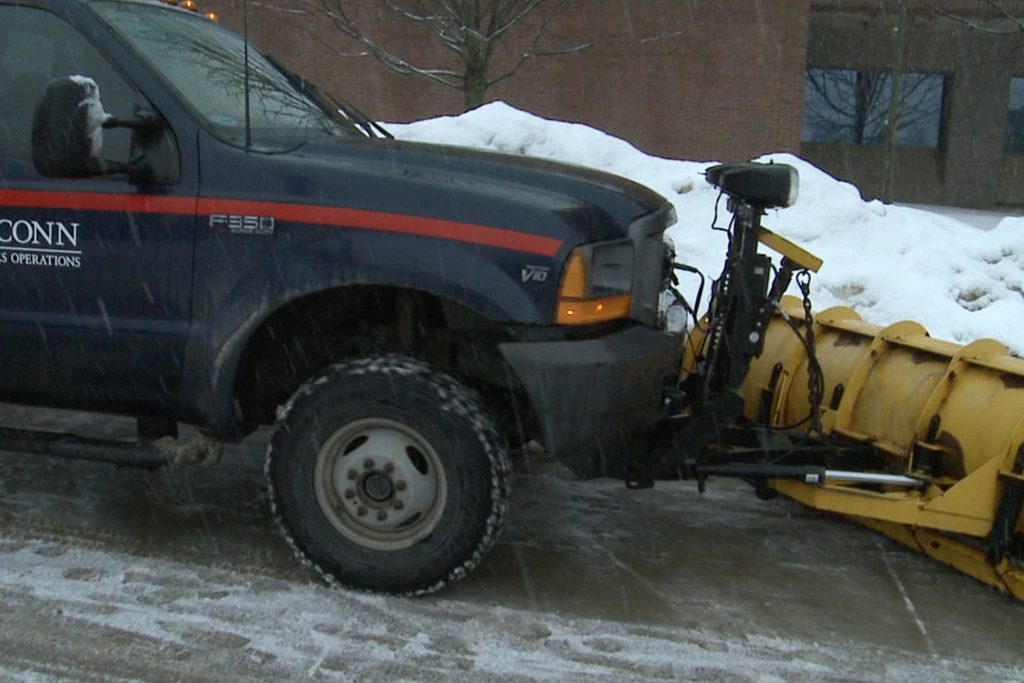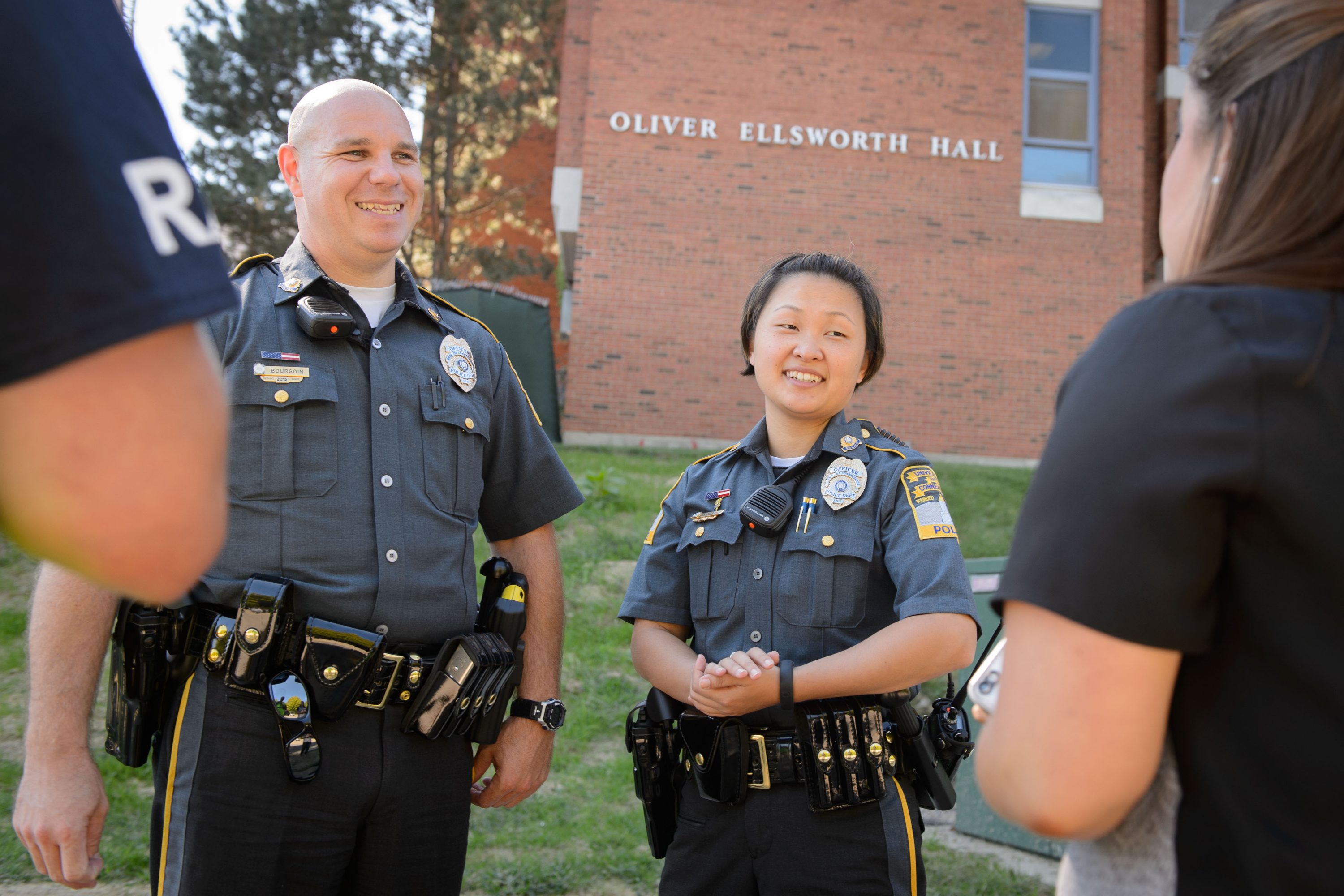If everything goes according to plan, you may not even notice UConn’s Office of Emergency Management.
It’s not always the giant, front page news-type events we deal with. — Chris Renshaw
The office, part of the Division of Public Safety and fully staffed since January, is responsible for planning and coordinating the University’s preparedness and response to a dizzying array of situations, ranging from the annual rite of move-in weekend to routine disruptions like winter storms, all the way to potentially deadly hazards. It’s a huge undertaking that requires speed, efficiency, and flexibility – and mostly happens behind the scenes.
“It’s not always the giant, front page news-type events we deal with,” UConn Fire Captain Chris Renshaw, the Fire Department’s liaison to the office, says. “Emergency management is a way of coordinating the University’s response to everything from power outages to the spring concert.”
Although emergency preparedness had long been a part of the Division of Public Safety’s mandate, it was relatively recently that the University realized that to effectively carry out that charge, a separate office was needed. Any given incident can require action from a huge range of diverse units at UConn, from Facilities to Transportation to Athletics to the Police Department. Bringing them all together, and coordinating an effective response to an incident that could last hours or even days, is something that can’t be handled on a catch-as-catch-can basis.

That’s where the new office – in which Renshaw works with UConn Police Lt. Christopher Casa and emergency management specialists Blaize Levitan and Mary Rose Duberek – comes in.
“We’ve become the central collaborative point for operations, administration, and academics to be on the same page for preparedness, prevention, response, and recovery of a significant event that affects not only UConn but the communities that surround us,” Renshaw says.
While most of OEM’s work happens in the background of daily events, the office has embraced the opportunity to help the broader public prepare for emergencies – whether that means students, faculty, or neighbors in the surrounding town.
The division’s web page, http://publicsafety.uconn.edu/emergency/, is a recently launched resource packed with information on responding to specific hazards, making plans for general preparedness, a glossary for some of the common emergency operations terminology that may sound strange to the uninitiated, and more.
Particularly important to the office’s approach, Renshaw says, are the individual parts of the site intended for specific audiences: students, parents, faculty and staff, and community partners.
“A critical incident doesn’t affect everyone in the exact same way, so we wanted to take a more holistic approach to preparedness, and really consider all the different stakeholders,” he says.
As a result, there are guides specifically for – for example – businesses, places of worship, and neighbors, while other information is tailored for the needs of students.

The office has also launched a safety and awareness campaign – called UConnREADY – that incorporates everything from social media to posters in residence halls and public spaces, all to promote a greater understanding of the importance of being ready for the unexpected.
So far, the office has been active in events ranging from winter weather to the victory celebration that followed the women’s basketball team’s record-breaking 11th national championship, and Renshaw says the dividends of the new approach are already apparent.
“We can’t develop plans at a snail’s pace if they need to be used in an emergency tomorrow,” he says. “We’ve built an office based on the understanding that, because of the nature of the work, it’s important to do things right the first time.”



